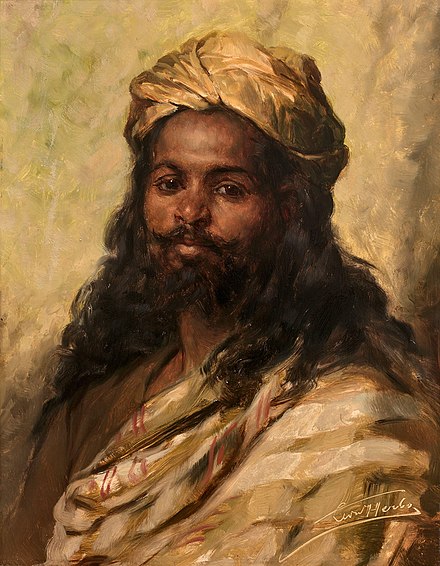Hey guys! welcome to chapter two of the Wretched of the Earth! Here is the summary and analysis we will be using for this book, feel free to use this to follow along if you cant complete the reading or need help catching up.
Chapter two is one of my favorites. It paints a wonderful painting of the colonized society and its potential paths and pitfalls to revolution. The key to this chapter is understanding the different players involved in a colonized society and the tensions between each other.
Some (optional) discussion questions:
1.Who is the lumpenproletariat? Why are the essential to a revolution, why is discounting their potential a mistake?
-
Who are the urban proletariat? what kind of positions do they have? why do they represent the “bourgeoisie fraction of the colonized population”?
-
Who are the rural masses, why are they often a hindrance to revolutions in the past, why are they also crucial? What role do witch doctors and tribal chief play in the lives of the rural masses?
-
Where will the political education of the masses come from? Why is it important?
-
What is the weakness of spontaneity?
Bonus: Try to tie in the concepts from chapter two to a real life countries, such as the events in Niger or Haiti (who is the lumpenproletariat, what are they doing ect).
feel free to ignore the discussion questions if they dont serve you, and just comment any thought, questions, and critiques you have of the chapter! also due dates are not conducive to a real education people! always go at your own pace you don’t have to comment today.
English translation by Richard Philcox – https://ia801708.us.archive.org/3/items/the-wretched-of-the-earth/The Wretched Of The Earth.pdf – you'd be reading from page 42 to 311 of this PDF, 270 pages
English translation by Constance Farrington – https://abahlali.org/wp-content/uploads/2011/04/Frantz-Fanon-The-Wretched-of-the-Earth-1965.pdf
Original French text – https://monoskop.org/images/9/9d/Fanon_Frantz_Les_damnés_de_la_terre_2002.pdf
English audio version – https://inv.tux.pizza/playlist?list=PLZ_8DduHfUd2r1OOCtKh0M6Q9xD5RaR3S – about 12h20m – Alternative links
soundcloud audio book english https://soundcloud.com/listenleft/sets/frantz-fanon-the-wretched-of-the-earth
Schedule
8/20/23 - pre-face and chapter one On violence
8/27/23- chapter two Grandeur and Weakness of Spontaneity
9/3/23- chapter three The Trials and Tribulations of National Consciousness
9/10/23- chapter four On National Culture
9/17/23 chapter five Colonial war and Mental Disorders and conclusion


Another Wretched of the Earth Chapter Discussion This one is my favorite so far (which I’ll get into in at the end.) Again my breadth of analysis is a bit limited as a first-time read but here are some of my understandings based on a few of the discussion questions. All quotes have been taken from the Farrington translation of Fanon’s Wretched of the Earth
This one is my favorite so far (which I’ll get into in at the end.) Again my breadth of analysis is a bit limited as a first-time read but here are some of my understandings based on a few of the discussion questions. All quotes have been taken from the Farrington translation of Fanon’s Wretched of the Earth
The Lumpenproletariat, writes Fanon, are composed of the dispossessed masses of growing rural populations, with either no physical holdings, or social ties of their own, or those who are affected by policies of colonial expropriation, and who exist within the periphery in urban centers, most often in conditions of poverty (“…that fraction of the peasant population which is blocked on the outer fringe of the urban centers, that fraction which has not yet succeeded in finding a bone to gnaw in the colonial system.”) who Fanon writes constitutes the “urban spearhead” of rebellion against colonialism. “For the lumpenproletariat, that horde of starving men, uprooted from their tribe and from their clan, constitutes one of the most spontaneous and the most radically revolutionary forces of a colonized people.”
In what ways is the lumpenproletariat so critical as to revolution? First, as Fanon writes: “The constitution of a lumpenproletariat is a phenomenon which obeys its own logic, and neither the brimming activity of the missionaries nor the decrees of the central government can check its growth.” I think here the key word that Fanon uses here is growth. Perhaps I’m reading a bit too much from just a single word, but my understanding of land dispossession, resource expropriation, and the associating rising poverty and social alienation that follows said policies by compradors of colonial rule, are social issues that increase in both intensity and popular discontent, with a continued colonialist or neocolonialist administration.
Fanon also writes, the lumpenproletariat are a class that is unafraid of violence and action. “These classless idlers will by militant and decisive action discover the path that leads to nationhood. They won’t become reformed characters to please colonial society, fitting in with the morality of its rulers; quite on the contrary, they take for granted the impossibility of their entering the city save by hand grenades and revolvers.” Harkening back the the first chapter, “decolonization is always a violent phenomenon,” and the lumpenproletariat, a dispossessed class, one socially alienated from the colonial governance that they are subject to, and one that is unafraid of violence, and who, as a growing class exists at the edges of urban society constitute a potentially revolutionary portion of the urban population that plays a key role in social movements in opposition to colonial/neocolonial administration:
“The outbreak of the rebellion in the towns changes the nature of the struggle. Whereas before the colonialist troops were entirely concerned with the country districts, we now see them falling back in haste on the towns in order to ensure the safety of the town population and their property. The forces of repression spread out; danger is present everywhere; now it’s the very soil of the nation, the whole of the colony, which goes into a trance. The armed groups of peasants look on while the mailed fist loses its grip. The rising in the towns is like an unhoped-for gas balloon.”
On the other hand, why is brushing aside the lumpenproletariat as a class significant to an urban portion of resistance to colonialism or neocolonialism? Fanon writes that if the movement for national liberation does not reach out to the lumpenproletariat, than the foreign colonialists will (" If this available reserve of human effort is not immediately organized by the forces of rebellion, it will find itself fighting as hired soldiers side by side with the colonial troops.") He cites the recruitment of lumpenproletariats in social and military roles aiding foreign powers: by the French in Algeria, by the Portuguese in Angola, and by the Belgians in the presence of lumpenproletariat in mass-meetings in opposition to Prime Minister Patrice Lumumba in the former Republic of the Congo (now the Democratic Republic of the Congo.) Fanon writes of the tenacity of the colonizers in exploiting intranational and regional conflicts to divide popular discontent in order to quash it and that they too see the potential of the lumpenproletariat as tools of violence that can be directed toward a resisting colony:
“The enemy is aware of ideological weaknesses, for he analyzes the forces of rebellion and studies more and more carefully the aggregate enemy which makes up a colonial people; he is also aware of the spiritual instability of certain layers of the population. The enemy discovers the existence, side by side with the disciplined and well-organized advance guard of rebellion, of a mass of men whose participation is constantly at the mercy of their being for too long accustomed to physiological wretchedness, humiliation, and irresponsibility. The enemy is ready to pay a high price for the services of this mass.”
Fanon writes that the urban proletariat as a class within a colonized state differs in comparison the the urban proletariat within the Western capitalist state. Specifically, Fanon writes that the small, growing urban proletariat (described within the text as “embryonic”) are key members within the colonized populace that allows the administration by colonizers to function smoothly, and that within the colonized population, they are a class “which has been most pampered by the colonial regime” as potential compradors. Some of the roles that this urban proletariat include key occupations that allow for resource extraction and expropriation (in text examples of “dockers,” “miners”) occupations that maintains the functioning infrastructure within these urban centers ( in text as “tram conductors” “taxi drivers” “nurses”) as well as occupations that directly deal with the colonialists themselves (in text as “interpreters.”) The urban proletariat within a colonized nation, as the beneficiaries of the scraps given by foreign corporations and colonizing governments, are the ones most amenable Western ideology: “Their way of thinking is already marked in many points by the comparatively well-to-do class, distinguished by technical advances, that they spring from. Here ‘modern ideas’ reign.”
The rural populace is distrustful of the urban proletariat, writes Fanon: they think of the urban proletariat as without morals, who adopts Europeans conventions, their ideology, their clothing, their language, as traitors to national heritage and values and who get along with occupying powers and make do within the framework of a colonial system. Fanon writes that this is not the classic rural-urban divide, that colonialism creates a new tension: “Here, we are not dealing with the old antagonism between town and country; it is the antagonism which exists between the native who is excluded from the advantages of colonialism and his counterpart who manages to turn colonial exploitation to his account.” This tension is not lost on colonizing powers, who seeks to make use of this conflict to further divide the rural and urban population to quash resistance to colonial rule.
Put most elegantly by Fanon: “Tactics are mistaken for strategy.” As previously described with the lumpenproletariat, the spontaneous eruption of resistance within the cities may change the nature of the national struggle as forces of coercion in the form of colonial military forces or colonial police focused on cracking down on dissent in rural districts are forced to retreat to the cities (regions where compradors and colonial administration are centered) to restore the order of colonial rule, yet Fanon states that this is not enough:
“They [leaders of popular revolts] discover that the success of the struggle presupposes clear objectives, a definite methodology and above all the need for the mass of the people to realize that their unorganized efforts can only be a temporary dynamic. You can hold out for three days—maybe even for three months—on the strength of the admixture of sheer resentment contained in the mass of the people; but you won’t win a national war, you’ll never overthrow the terrible enemy machine, and you won’t change human beings if you forget to raise the standard of consciousness of the rank-and-file.” [Emphases mine.]
This gets back to Fanon writing that decolonization is a act that dismantles the material and ideology structures of the colonizers. One cannot rely solely on spontaneous reaction to the atrocities of the colonizing force (though their atrocities are many) to push the colonized into opposing the colonizers, because colonizers has in the past, and will, recruit among the compradors and opportunist lumpenproletariat to tamp down on anti-colonial movements.
Decolonization requires political education of the masses, (“the political education of the masses is seen to be a historic necessity”), of self-critique and improvement on past shortcomings to improve in future programs and decision-making (“The leaders show their power and authority by criticizing mistakes, using every appraisal of past conduct to bring the lesson home, and thus insure fresh conditions for progress,”) and it requires the an organizational framework to facilitate the transmission of shared experiences and understandings, directing mass action, and establish communicative ties of solidarity between colonized people of all backgrounds in opposition to colonialism:
I spent a good bit of time reading the chapters (I missed the ping when this was first posted, sorry Othello) and it kept me way into the night and a bit in the morning so I hope this discussion response wasn’t better in my mind than posted. The analyses of class in any theory always pulls my interest and Fanon’s viewpoint of class structures within the framework of a colonial/neocolonial society is a new perspective to add to my existing understandings of class. Overall a great chapter, but one that I need to read over again (and with an exhaustion-free brain) to fully understand Fanon’s points. Thanks again Othello, looking forward to the discussion for this chapter from others, and with future chapter discussions!
(Apparently Hexbear is not happy with my post in 1 block so I had to split it up into 2 posts)
I am going to give this comment the response it deserves after the hurricane passes tomorrow!
Sure thing friend, please stay safe
so I agree will almost everything you said spot on! I think I originally misread your comment so I went back and reread the whole chapter, only to reread your comment and realized I may have misunderstood you.
just in case, while the lumpenproletariat may come from rural places they are as you noted the “urban spearhead of rebellion”. the lumpenproletariat are in my understanding a subset of the peasant masses who were forced to relocate to cites. Now I think you got this correct in your original statement i was just a bit confused by your phrasing in that one part. “are composed of the dispossessed masses of growing rural populations”
besides that your analysis looks flawless to me, I wish I had more to say but i just kept nodding while reading like
ill be posting mu own thoughts either today or tomorrow as soon as im done cleaning up all these damn branches around my neighbors house.